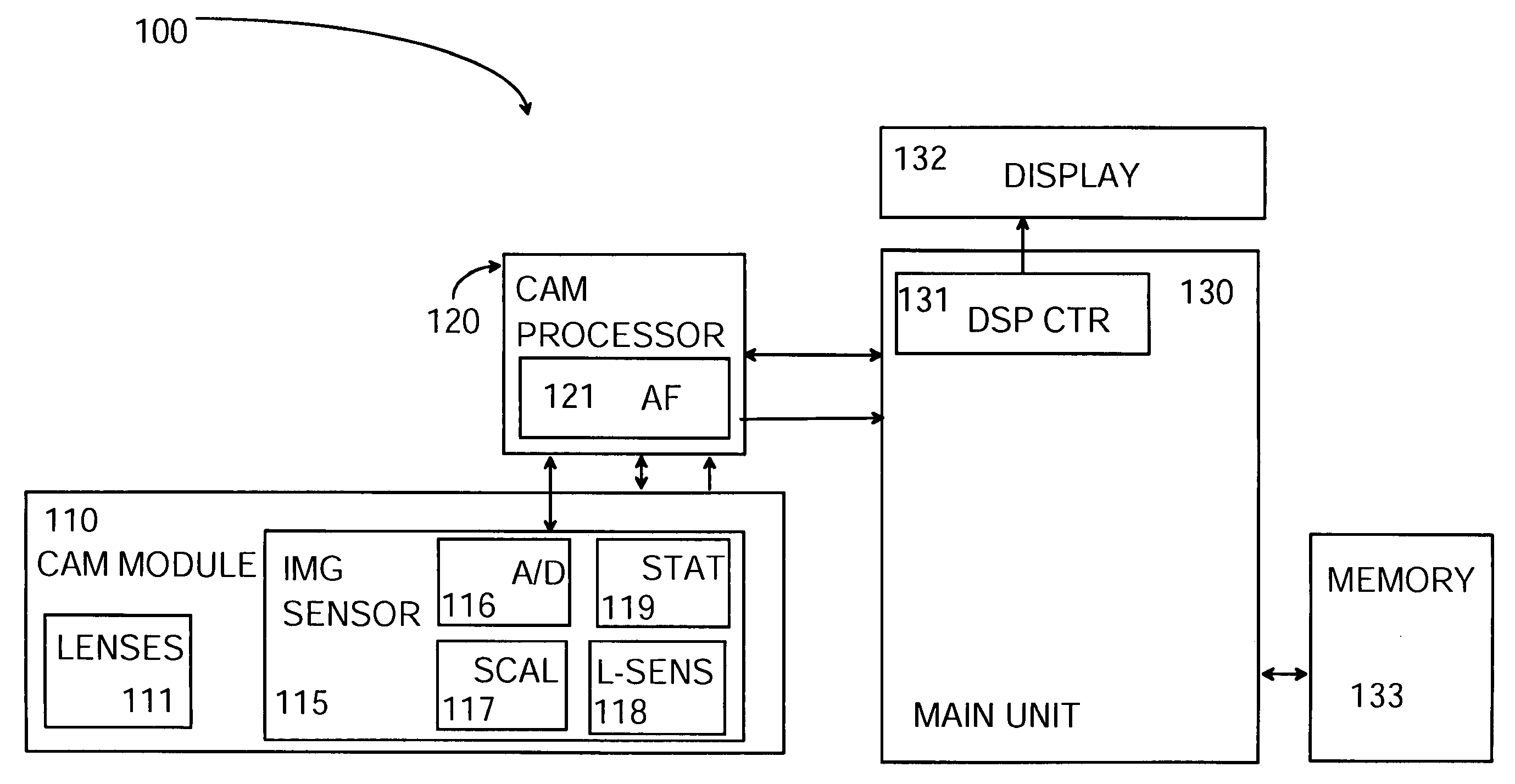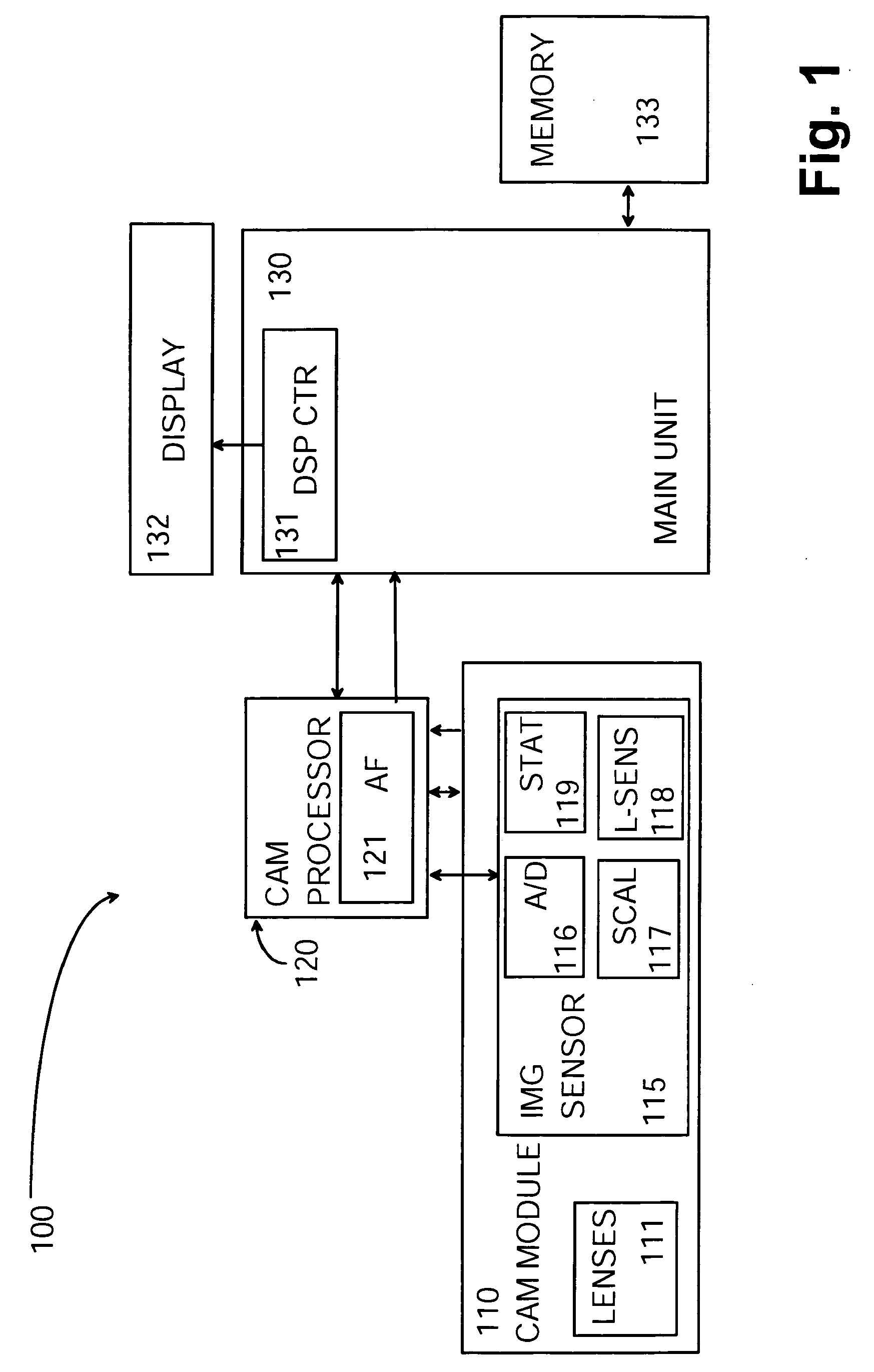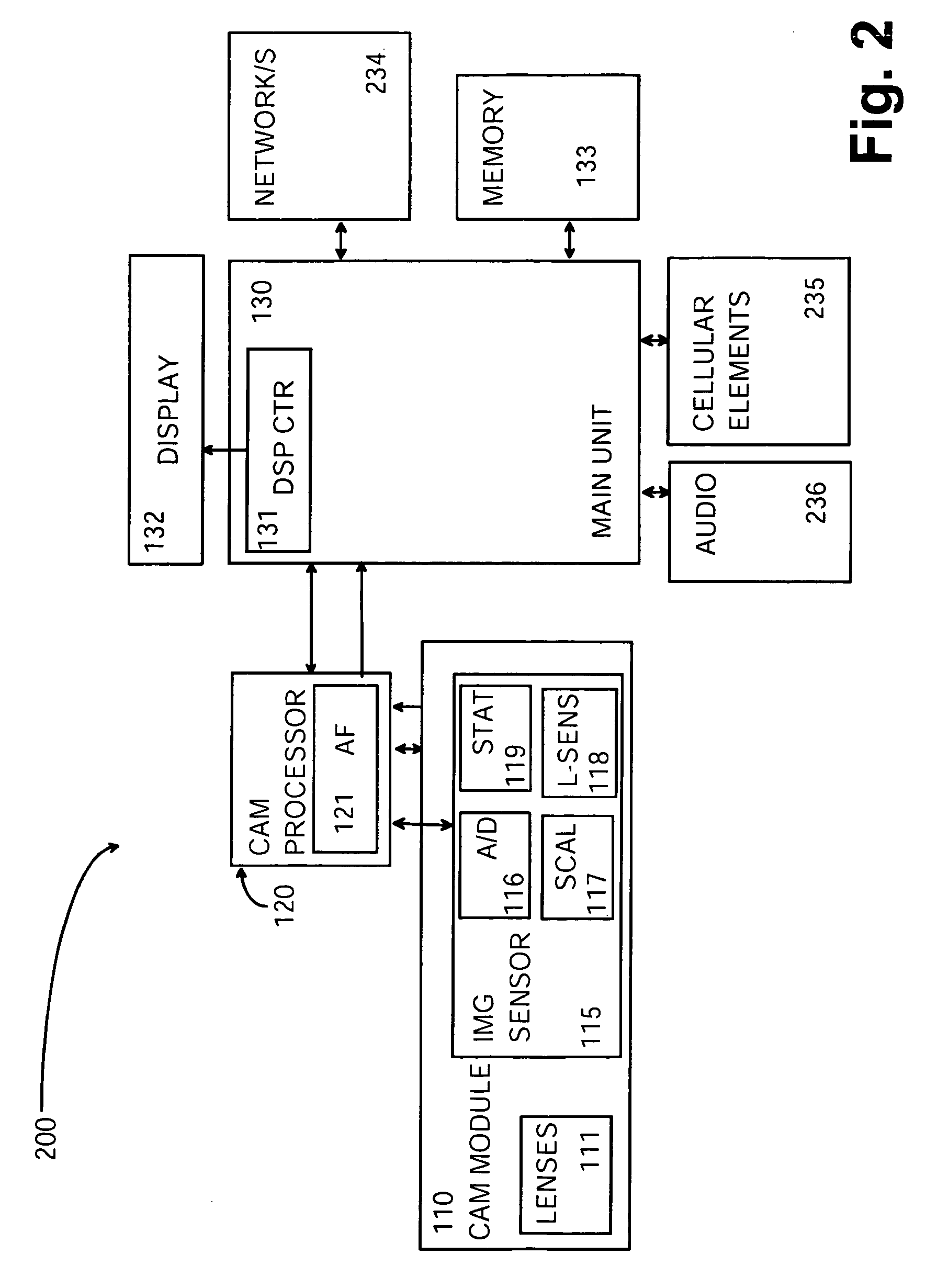Digital imaging with autofocus
a digital imaging and autofocus technology, applied in the field of digital imaging, can solve the problems of insufficient image resolution for image based focusing in the modern multi-megapixel, lowered image resolution intended for viewfinder preview, and certain delay before the image can be recorded, so as to achieve more accurate autofocus
- Summary
- Abstract
- Description
- Claims
- Application Information
AI Technical Summary
Benefits of technology
Problems solved by technology
Method used
Image
Examples
Embodiment Construction
[0023] Although specific terms are used in the following description for the sake of clarity, these terms are intended to refer only to the particular structure of the invention selected for illustration in the drawings and they are not intended to induly define or limit the scope of the invention. In the description a general term “image” is used for defining such forms of an image data that are visual. Examples of images are still image, video image and a preview image that is used during capturing process. “Raw image” in this description relates to such an image data that is not processed in any manner. Raw image is data that is captured by the image sensor but not interpreted. “Processed image” is a result from processed raw image data. The processed image can be interpreted visually, but not necessarily. An “imaging device” can be any device comprising means for digital imaging. Therefore, the imaging device can be a digital camera, imaging phone or some other device, that can ...
PUM
 Login to View More
Login to View More Abstract
Description
Claims
Application Information
 Login to View More
Login to View More - R&D
- Intellectual Property
- Life Sciences
- Materials
- Tech Scout
- Unparalleled Data Quality
- Higher Quality Content
- 60% Fewer Hallucinations
Browse by: Latest US Patents, China's latest patents, Technical Efficacy Thesaurus, Application Domain, Technology Topic, Popular Technical Reports.
© 2025 PatSnap. All rights reserved.Legal|Privacy policy|Modern Slavery Act Transparency Statement|Sitemap|About US| Contact US: help@patsnap.com



